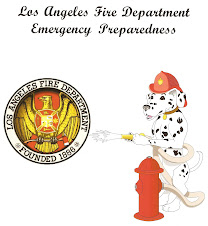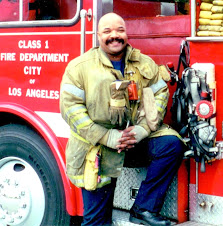Sending Your College Student Off With The Right Tools
BY: Jayson A. Johnson
One of the most stressful yet rewarding times for many parents is sending a child off to college. I just experienced this roller coaster of emotion as I helped to deliver my daughter for her freshman year at Grand Canyon University in Phoenix, Arizona. While filled with pride that my daughter was taking the next step into adulthood, I also found myself questioning “have I prepared her enough?” Have I put enough tools in her “life tool box” ? Only time will tell.
College represents many things:
- The achievement of graduating from high school
- A new level of maturity
- Starting the adult chapters of a young persons life
- Moving away from home…for many this is a first
- Dealing with life on life’s terms
Many will spread their wings and soar, while others will have a more difficult path. All will discover that life is full of peaks and valleys and that while we as parents try to prepare them for the challenges that wait ahead, there are some challenges that no amount of talk can ready them for. The best we can do is to give them deep roots so that when the storms of life blow, our young adults can be in the best position to survive and recover. This article is designed to open dialog and talk about some things to help with a young adult’s preparedness and hopefully get them ready in case one of life’s storms involve a disaster.
LIFE ON LIFE’S TERMS:
In January of 1994, as students prepared for the spring term at California State University Northridge, a 6.7 magnitude earthquake shook the greater Los Angeles basin to it’s core. The campus of Cal. State Northridge (CSUN) suffered extensive damage to all of it’s 107 buildings that included student housing and child care facilities. It took more then seven years to repair the San Fernando Valley campus at a cost of over 400 million dollars. Angelenos stood in line for several hours to get basic supplies like water, food and first aid. All roads and freeways in and out of the San Fernando Valley suffered major damage. People had to survive on what hey had. Is your student prepared?
In August of 2005, one of the most prolific storms hit the Gulf Coast, Hurricane Katrina would forever change how we as a country prepare, endure and recover from natural disaster. One of the often over looked components of that event was the effect Katrina had on college students who had just started their academic year. Imagine you are a seventeen-year-old college freshman who is just getting used to living away from home and you now have to make adult decisions never asked of you before. Schools like Tulane, Dillard and Xavier became flooded and could not house their student population. Would your student know what to do if this happened on their campus?
It was April of 2007 and students on the campus of Virginia Polytechnic Institute and State University (Virginia Tech) became the target of a lone gunman who acted out on violent thoughts and killed 32 students and faculty and wounding 17 others. While this senseless act could not have been prepared for, having the conversation of “what if” might help a young student process critical information when disaster strikes.
Just this year in 2012, again in April, during a dark rain filled night, two students from China, who were studying in Los Angeles at the University of Southern California became victims of another senseless shooting. Again, there is no way to guarantee students do not become victims of either man made or natural disasters, but check back here next week to see some suggestions that could reduce their chances and also speed up their recovery. Hope for the best, but prepare for the worst.
As you can see many college campuses have their fair share of disasters. Most campuses have science buildings, chemistry labs as well as storage of hazardous materials. Having an understanding of when to leave or when to stay (shelter in place) could be just the tool a student needs to survive. Here are some suggestions that could greatly reduce the impact a disaster has on your young scholar.
- Have a GO Bag. – A GO bag is a pre-packed backpack/duffle/tote that contains the essential items to survive a minimal of 72 hours. (Clothes, food, water, medication, money, tool, protection, first aid kit, radio, flashlight, whistle and what ever else that individual may need)
- Know the number to campus security/escorts – Burning the midnight oil, working, studying and visiting friends across campus causes students to relax their personal security. NEVER walk in the dark alone. Most campuses offer some type of escort service or ride system to reduce the potential for campus attacks and assaults.
- Register your email/Smart Phone – One of the lessons learned from the Virginia Tech. tragedy was the better use of early warning systems via technology. Most campuses have a warning registry where students can register their email address and cell phone numbers to receive emails and text messages in the event of a threat.
- Learn about your new area and what types of events have occurred before- My daughter goes to school in Arizona. Here are the “red flags” for the Phoenix area that I have read about: Flash floods, droughts and wild land fires. I learned that by typing in “Environmental and natural hazards of Phoenix Arizona” in my computer search engine…simple. As well, the school was more then happy to share with me how to help my daughter prepare for the Arizona environment. I made sure that she has plenty of water…2 cases of bottled water in her dorm room. (Water is like gold, especially after any disaster), we learned the location of her emergency exits of her dorm and the safe gathering area, Have a plan to reconnect…use what ever tools are available. Cell phone, text, Skype, Facebook and Twitter are just a few tools available. Having knowledge of social media and active/open accounts may allow you and your student to reconnect quicker and that speeds up the recovery process.
- Scan important documents to USB drive- having your student’s important documents scanned and saved to a USB drive or to an on line host/cloud can help with the recovery process. Items such as Drivers License, Student ID, transcripts, financial aid records, birth certificate, visa/passport, Soc. Sec information, Bank and Credit Union information can be a major headache if destroyed. Having a digital copy in your cloud will be a huge help.
- Know the “Apps”- There’s an app. For just about anything. Here are four suggested apps that I have that you may want to download if you have a smart phone/iPad/tablet: 1.) Life360- This is an app to help you use GPS to locate family members. After Hurricane Katrina, many people could not find loved ones for weeks. 2.) American Red Cross/First Aid- I love this app. Quick and useful. 3.) FEMA- This is another great tool to have at your finger tips. 4.) Flashlight- This app. Turns my iPhone into an emergency flashlight…how cool is that?
- Consider a First Aid or EMT elective - Maybe your student needs to fill a general education requirement or wants to pick up a few extra units. Consider taking a health/first aid class or a pre-med EMT class. The information they learn just might save your life. They just might find a career path.
The most important thing is to have the conversation and have a plan with your student. To fail to plan is to plan to fail. Our students are in institutions to stimulate their thinking and expand their knowledge…we must do our part to support them in this process and one of the best ways to do that is to help them be prepared. Not all tests will be given in a classroom.
Dad (me) dropping off daughter in the dorms for her freshman year. Be safe.















